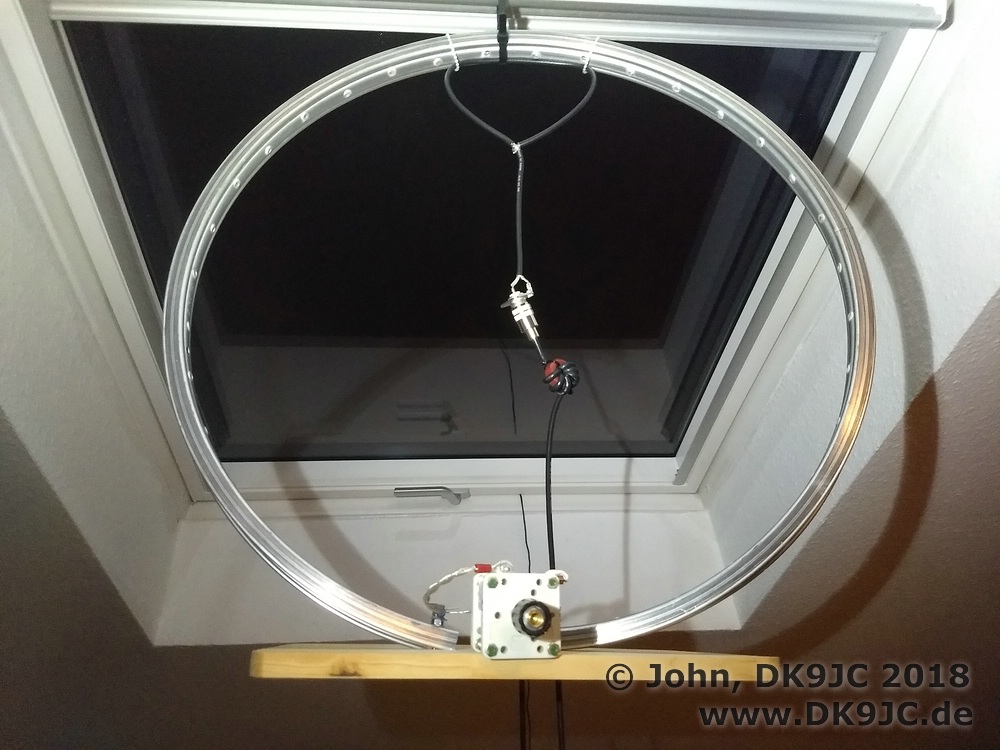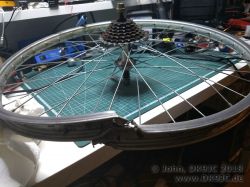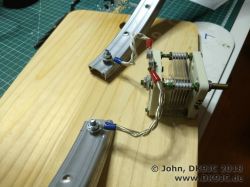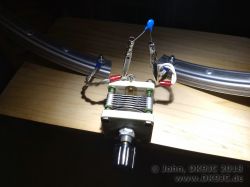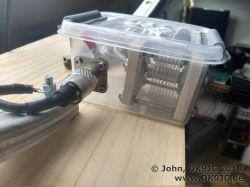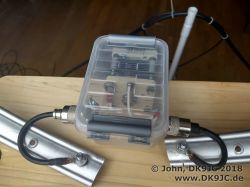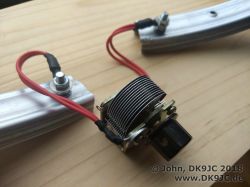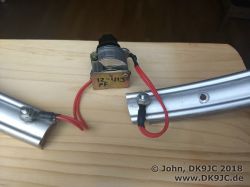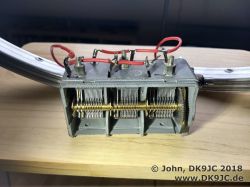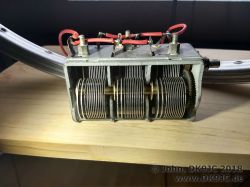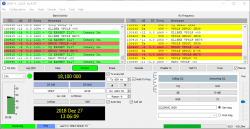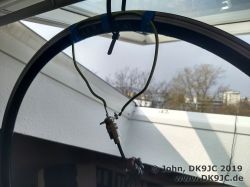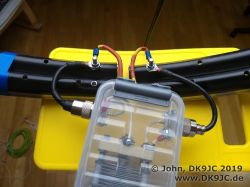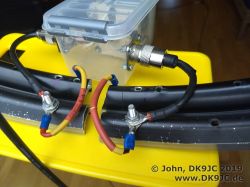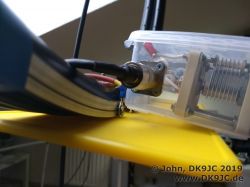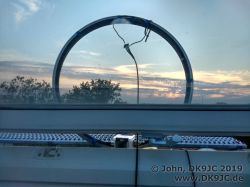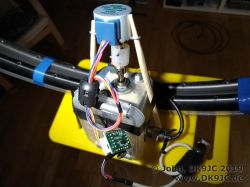I was out for a walk in my city when I found this old 26" bicycle rim in the brushwood close to the rail tracks. I removed all the crusty stuff and added a variable capacitor with around 15-120 pF.
Some time later I was able to work RA3BL in Moscow 2.200 km way on 30m. The efficiency on 10 MHz is only 5% on such a small loop but it worked. I later worked LA9NKA on 12m, K8JDC on 17m, DK3KUD on 60m and highlight was VP8LP in Falkland Islands on 17m who was 12.700 km (7.900 mi) away. Unbelievable.
I like this antenna a lot and can highly recommend it. I try to source some old 24" and 28" rims to compare them. 28" should be the best option there performance-wise but you need a capacitor with a low starting capacity, otherwise you probably lose 10m.
Check out my other, big loop on which I worked hundreds of stations already: Magnetic Loop (Magnetantenne) selber bauen
To calculate your loop you can use a calculator like the one from 66pacific: http://www.66pacific.com/calculators/small-transmitting-loop-antenna-calculator.aspx
The diameter of conductor for such a bicycle rim is around 33 mm, which is a lot compared to RG-213/214 with only around 10mm. With this value known you can calculate the perfect capacitance for your desired frequency.
Here I calculated the values for a 26 inch rim. The metric dimensions are: 55cm diameter = 1,72m antenna circumference.
| MHz |
Tuning Capacitance |
Antenna efficiency |
| 3.573 | 1,698 pF | 0% (-24.1 dB below 100%) |
| 5.357 | 756 pF | 2% (-18.0 dB below 100%) |
| 7.074 | 433 pF | 4% (-13.9 dB below 100%) |
| 10.136 | 211 pF | 13% (-8.9 dB below 100%) |
| 14.074 | 109 pF | 32% (-4.9 dB below 100%) |
| 18.100 | 66 pF | 53% (-2.7 dB below 100%) |
| 21.074 | 49 pF | 66% (-1.8 dB below 100%) |
| 24.915 | 35 pF | 78% (-1.1 dB below 100%) |
| 28.074 | 28 pF | 84% (-0.8 dB below 100%) |
| 50.313 | 9 pF | 98% (-0.1 dB below 100%) |
Photos from my first design :
Update 23.12.2019:
After almost one year I decided to give an update on my bicycle mag loop antennas. I gave the original loop to a friend and made a new one. I went to a local bike shop and asked for some decommissioned nice looking and symetric rims. They said I can pick up as many as I like which I of course did (Yes, I gave a good tip..).
I worked the following DX-stations (EU and NA worked all the time so not worth noting) on FT8 with one of my bicycle rim magnetic loop antennas:
17m: OD5PY (Lebanon, 2.896km), 8P2K (Barbados, 7.213km), TR8CA (Gabon, 5.425km), S92HP (Sao Tome & Principe, 5.448km), H31A (Panama, 9.001km), VK2FAD (Australia, 16.601km), PJ4/DC7MO (Bonaire, 7.922km), VP8LP (Falkland Islands, 12.787km).
I later added a second bicycle rim in parallel (not in series!). My aim was to double the conductor size to get a much better efficiency. I drilled some wholes and connected both rims together. That worked pretty good for me.
The last und most current state is now a IR-controlled stepper motor. That solved the hand capacitance during the fine-tuning. Those cheap chinese modules come with a very bad chenglish manual which makes operation a bit unpleasant, so I might look for something else later.
Photos from the later modifications:
